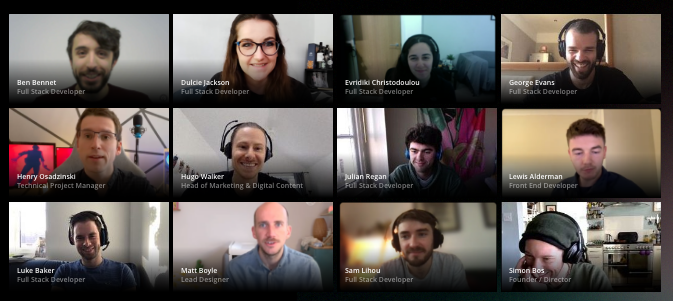Can artificial intelligence stop the harsh reality of internet trolling?
Bristol-based innovation agency, Gravitywell (pictured below), have developed technology to teach a piece of artificial intelligence (AI) how to detect and prevent the spread of flashing images on social media that could trigger seizures.
In September 2021, the browser plug-in, named ‘unFlash’ was launched. The plug-in allows specific users to report examples of flashing images that appear on their Twitter feed, which are then analysed by the AI that Gravitywell have built. Using a process called ‘machine-learning’, unFlash’s aim is to eventually teach the AI how to effectively detect and block images that fall within the photosensitive range. This would prevent harmful imagery with the potential of triggering a seizure in people with photosensitive epilepsy from being shared online.

The Harding Flash and Pattern Analyser is currently used in broadcasting media to detect flashing images that may fall within the photosensitive range, preventing flashing content from being shared or informing the display of warnings where necessary. Social media, however, does not currently use any measures to detect these images or generally display any warnings.
The unFlash project is currently focused on the social media platform Twitter, where people with epilepsy have recently been the victims of vicious trolling attacks, which have caused people to have seizures across the globe.
The team at Gravitywell have said: “We were shocked to learn about this form of online abuse and felt driven to try to help. We strongly believe that with a combination of modern technology and collaboration across the major platforms we can put an end to this problem.
"We hope that unFlash is the starting point that will lead to a wider range of tools available on as many platforms as possible to keep people safe from harm.”
Protecting people globally
The social media team at the Epilepsy Society are able to report flashing images to unFlash that regularly appear from internet trolls targeting the charity’s Twitter page and users. At present, only specified users will be able to install and use the unFlash plug-in.
However, the benefits of technology that can detect and block flashing content, whether sent maliciously or unintentionally, will be felt by the 2 million people who have photosensitive epilepsy worldwide.
The Epilepsy Society have said: “Social media is a global platform, and the only true way to protect people from seizure-triggering content is to turn off the tap at its source. That’s why we are so grateful to the team at Gravitywell for their commitment to developing unFlash. We are hopeful for what the AI can contribute to the protection of people with epilepsy online.
“However, small companies such as Gravitywell who have donated their time to protect people should not burden the responsibility of protecting Twitter’s users; the social media giants must be held accountable for protecting vulnerable people with disabilities on their platforms”.
Epilepsy Society have been campaigning to criminalise the deliberate dissemination of flashing images with the intent to trigger a seizure, through passing ‘Zach’s Law’ in the UK’s upcoming Online Safety Bill. The title of the charity’s Zach’s Law campaign was inspired by 10-year-old fundraiser Zach Eagling, whose fundraising page was targeted when he was completing laps of his garden to raise funds for the Epilepsy Society.
